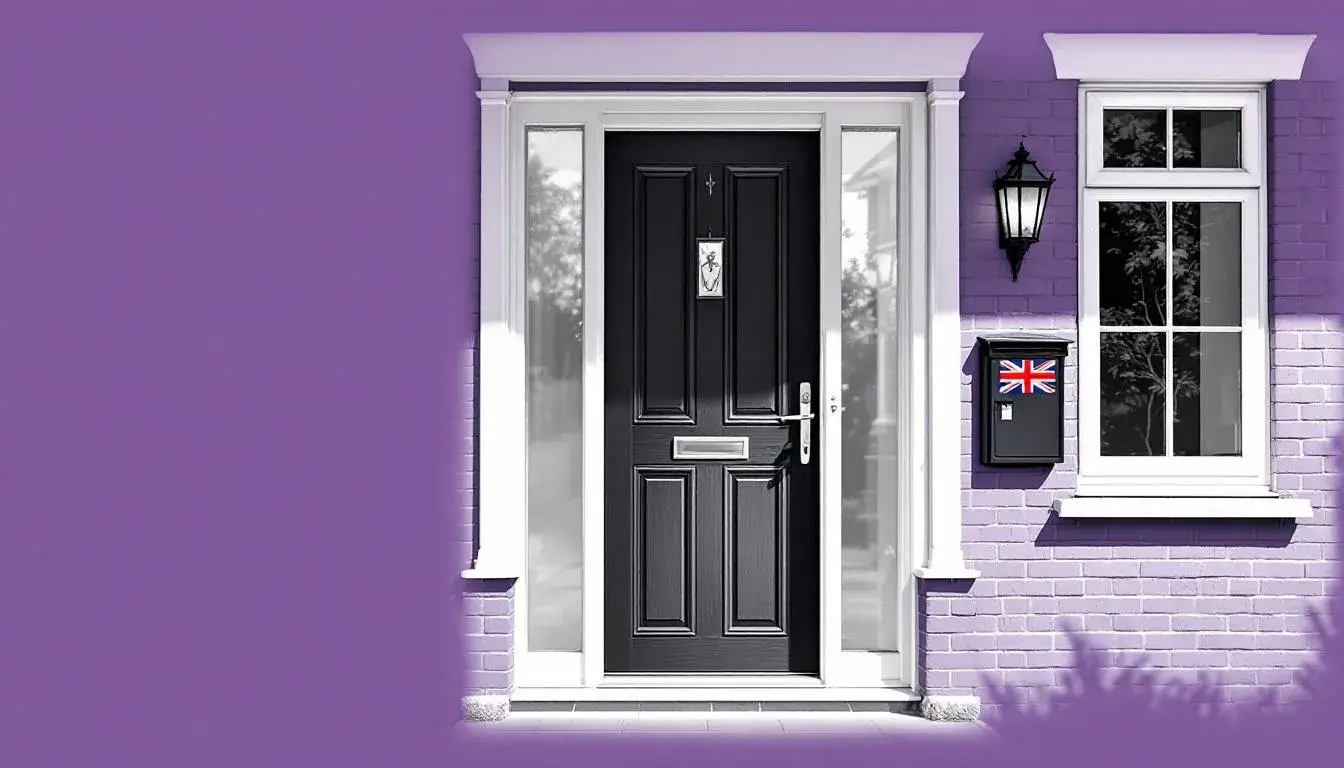
How to use a secured loan for home improvements without remortgaging

Why a second charge can beat remortgaging right now
For many UK homeowners, the renovation wishlist has grown faster than savings. Extensions, loft conversions, new kitchens, and energy upgrades are meaningful investments, but they are rarely cheap. Remortgaging to release equity used to be the default route. Today, with many households sitting on competitive fixed rates, breaking a deal can trigger early repayment charges and new arrangement fees that make the numbers less attractive.
A secured home improvement loan offers another path. It places a second charge against your property, separate from your main mortgage. That separation matters. You can keep your existing mortgage untouched while accessing larger sums than most unsecured loans will allow, often at a lower interest rate thanks to the collateral. For sizeable projects that need £25,000 to £150,000, this combination of capacity and pricing can be compelling.
Understanding APR is not just about percentages - it is about what you pay in real terms over time. Secured loans typically carry lower rates than unsecured personal loans because the lender’s risk is reduced. Longer terms can also spread the cost, easing monthly outgoings during a build. The trade-off is simple: longer terms usually mean paying more total interest. The right choice balances affordability today with overall value across the life of the loan.
The core advantage: keep your favourable mortgage, add targeted funding for improvements, and avoid remortgage penalties.
Speed can also matter. While remortgaging can be paperwork-heavy, many secured loan providers have streamlined processes. If your builder is ready to start, quicker access to funds can prevent delays and cost overruns. That said, this is still borrowing against your home. If repayments are missed, you risk repossession. The discipline here is to borrow an amount aligned to accurate quotes, realistic contingency, and the uplift you expect to create in value or comfort.
Kandoo is a UK-based retail finance broker. We connect homeowners with a panel of lenders, helping you compare secured loan options, clarify eligibility, and select terms that fit your plan. Clear comparisons, transparent costs, and a realistic repayment strategy turn a complex decision into a confident one.
Who should consider this route
If you are planning a major project - think extension, full renovation, or multi-room refit - and you want to preserve a strong mortgage deal, a secured loan can make sense. It suits homeowners with sufficient equity and a stable income who value predictable budgeting, either through fixed rates or term lengths fine-tuned to monthly affordability. It can also help those whose credit is not perfect but who have adequate equity and can evidence affordability.
If your project is modest, or you can clear costs quickly, an unsecured personal loan or savings may be simpler. Likewise, if your current mortgage is ending soon and a new rate is competitive, remortgaging might still be worth exploring. The key is comparing all routes on total cost, speed, risk, and flexibility.
Jargon made simple
Second charge mortgage: A secured loan that sits behind your main mortgage. Your property is collateral for both, in a defined order of priority.
Loan to value (LTV): Your combined mortgage plus secured loan as a percentage of your property value.
Fixed vs variable rate: Fixed keeps payments steady over a set period. Variable can move with market rates, potentially cheaper or costlier over time.
APRC: The total cost of credit over the term, including interest and mandatory fees, expressed as an annual percentage.
Equity: The portion of your home you own outright, calculated as value minus outstanding borrowing.
Early repayment charges: Penalties for exiting a mortgage or certain loans before the end of a fixed or discounted period.
Secured vs unsecured: Secured uses property as collateral, usually lower rates and higher limits. Unsecured does not use property, typically higher rates and lower limits.
Your funding choices, compared
Secured home improvement loan
Keeps your current mortgage intact. Borrow from roughly £10,000 up to around £150,000, subject to status and equity. Often lower rates than unsecured. Risk of repossession if you fall behind.
Remortgage to release equity
One larger mortgage replaces your current deal. May be competitive if your fixed rate is ending. Can trigger fees or charges if exiting early. Timescales and paperwork are often longer.
Unsecured personal loan
Fast and simple for smaller projects. Lower borrowing limits and higher rates than secured. No charge on your property.
Credit cards or 0 percent promotional deals
Useful for short-term cash flow and staged purchases. Risk of high revert rates and lower credit limits. Requires discipline to clear before promotions end.
HELOC-style facilities
Less common in the UK. Revolving credit secured on equity can be flexible where available, but most lenders favour fixed-term secured loans for home improvements.
Bigger projects need bigger tools. Match the finance to the scale, timeline, and risk of your build.
What it costs, and what it could do
| Matter | What to expect | Why it matters |
|---|---|---|
| Loan amount | Roughly £10,000 to £150,000, subject to equity and credit | Funds full-scale projects without splitting work into phases |
| Interest rate | Generally lower than unsecured, fixed or variable options available | Reduces long-run cost for larger borrowing |
| Term length | Often 3 to 25 years | Longer terms cut monthly cost but raise total interest |
| Fees | Valuation, arrangement, broker, legal, and possible discharge fees | Adds to the APRC - compare headline and total cost |
| Speed | Typically faster than remortgaging, slower than some unsecured loans | Helps lock contractors and avoid price inflation |
| Property impact | Potential uplift in value and energy efficiency | Strengthens comfort, resale appeal, and running costs |
| Risk | Your home may be repossessed if payments are missed | Requires robust budgeting and contingencies |
Who is likely to qualify
Lenders assess three pillars: equity, affordability, and credit profile. Adequate equity is essential because the loan is secured on your home and sits behind your main mortgage. An independent valuation may be required to confirm property value. Affordability checks review income, outgoings, and other commitments to ensure repayments are sustainable, especially if you select a longer term. Credit history still matters, but some lenders consider applicants with missed payments or lower scores if the overall profile and security are strong. Expect identity checks, documentation, and a review of your renovation plan. Fixed terms can provide payment certainty, while variable rates may suit those comfortable with rate movements. If you are close to the upper LTV limits or your income varies, be prepared to evidence stability and provide a realistic contingency within your project budget.
From application to funds in your account
Scope the project and gather itemised quotes.
Check equity, existing mortgage terms, and credit file.
Compare secured loan options with a regulated broker.
Choose rate type, term length, and repayment structure.
Submit documents and complete affordability checks.
Property valuation and legal charge arrangements.
Sign agreements and receive funds to your account.
The upsides and the trade-offs
| Aspect | Pros | Cons |
|---|---|---|
| Mortgage preservation | Keep a favourable deal and avoid exit charges | Two concurrent debts secured on your home |
| Borrowing capacity | Higher limits than unsecured options | Larger debt requires stricter affordability |
| Pricing | Often lower rates than unsecured loans | Fees add to overall cost |
| Flexibility | Fixed or variable, short or long terms | Longer terms increase total interest paid |
| Speed | Usually quicker than remortgaging | Not always as fast as unsecured credit |
Critical checks before you commit
Before you sign, validate the build cost with at least two comparable quotes and include a contingency for overruns. Stress test repayments against plausible rate rises if you choose a variable option, and against life events that could disrupt income. Compare the APRC across lenders, not just the initial rate, and line up the true all-in project budget, including professional fees, planning consents, and temporary accommodation if required. Confirm that the expected value uplift is realistic for your local market, and that the works will be insurable during the build. Finally, ensure your contractor has suitable credentials, references, and staged payment terms that protect you if timelines slip.
Sensible alternatives worth a look
Time a remortgage to coincide with your fixed-rate expiry to avoid charges, then release equity into the new deal.
Use an unsecured loan for a smaller, discrete project that you can repay quickly.
Combine savings with a smaller secured loan to reduce interest costs and preserve liquidity.
Explore targeted home energy grants and schemes that can offset part of the spend.
Phase the project into stages funded by cash flow and lower-cost credit windows.
FAQs
Q: How much can I borrow with a secured loan for improvements? A: Depending on equity, credit, and affordability, many lenders consider amounts up to around £150,000. Smaller or larger sums can be available based on individual circumstances.
Q: Will I have to change my existing mortgage? A: No. A secured loan typically sits as a second charge, leaving your current mortgage intact. This can help you avoid early repayment charges and arrangement fees tied to remortgaging.
Q: Are interest rates always lower than unsecured loans? A: Generally yes, because the loan is secured on your property. But rates vary by lender and profile, so compare APRC and total cost across offers.
Q: How quickly can I get the funds? A: Often quicker than a full remortgage due to streamlined processes, though unsecured loans can be faster. Timescales depend on valuation, legal work, and documentation.
Q: What if my credit is not perfect? A: Some lenders will consider applicants with weaker credit if equity and affordability are strong. Rates may be higher, but it can still be viable for major projects.
Q: What is the main risk? A: Your home is at risk if you fall behind on repayments. Budget conservatively, build contingencies, and choose terms you can sustain.
Ready to move from plans to progress
If your project is defined and your mortgage deal is worth keeping, a secured home improvement loan can unlock the budget without resetting your mortgage. Compare offers through a regulated UK broker like Kandoo, align the term to your cash flow, and use realistic quotes to set the right loan amount. The goal is straightforward: fund the build, protect your mortgage, and keep monthly payments manageable.
Important information
Kandoo is a UK-based retail finance broker, not a lender. Secured loans are subject to status, affordability, and valuation. Your property may be repossessed if you do not keep up repayments on a mortgage or any other debt secured on it. Rates, terms, and loan amounts vary by lender and applicant profile.
Buy now, pay monthly
Buy now, pay monthly
Some of our incredible partners
Our partners have consistently achieved outstanding results. The numbers speak volumes. Be one of them!


Eco Sun Solutions

MYA CLINICS LTD










